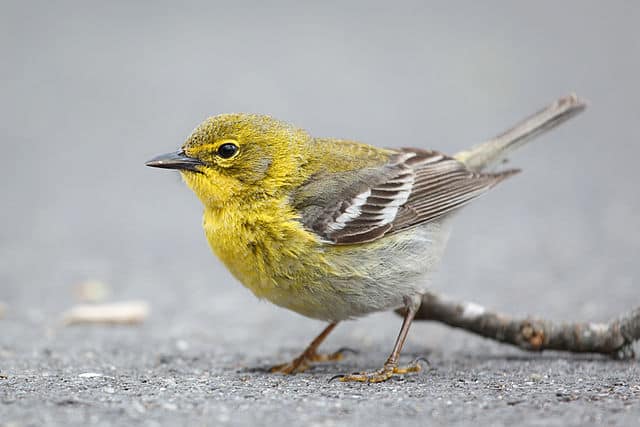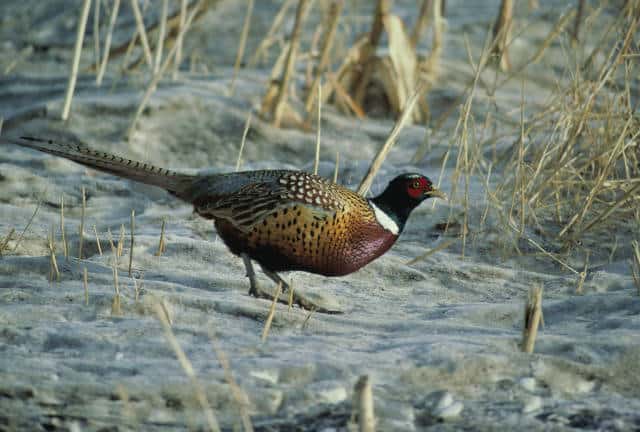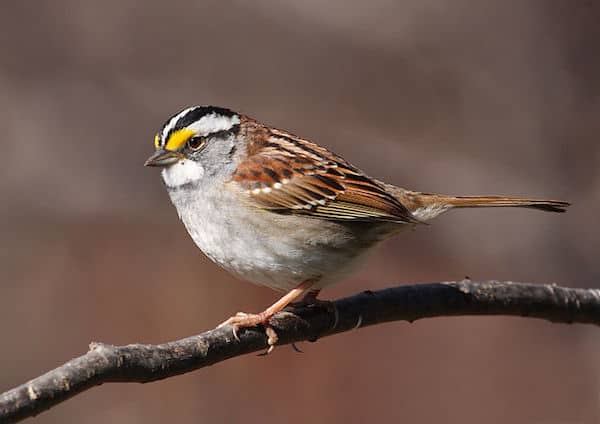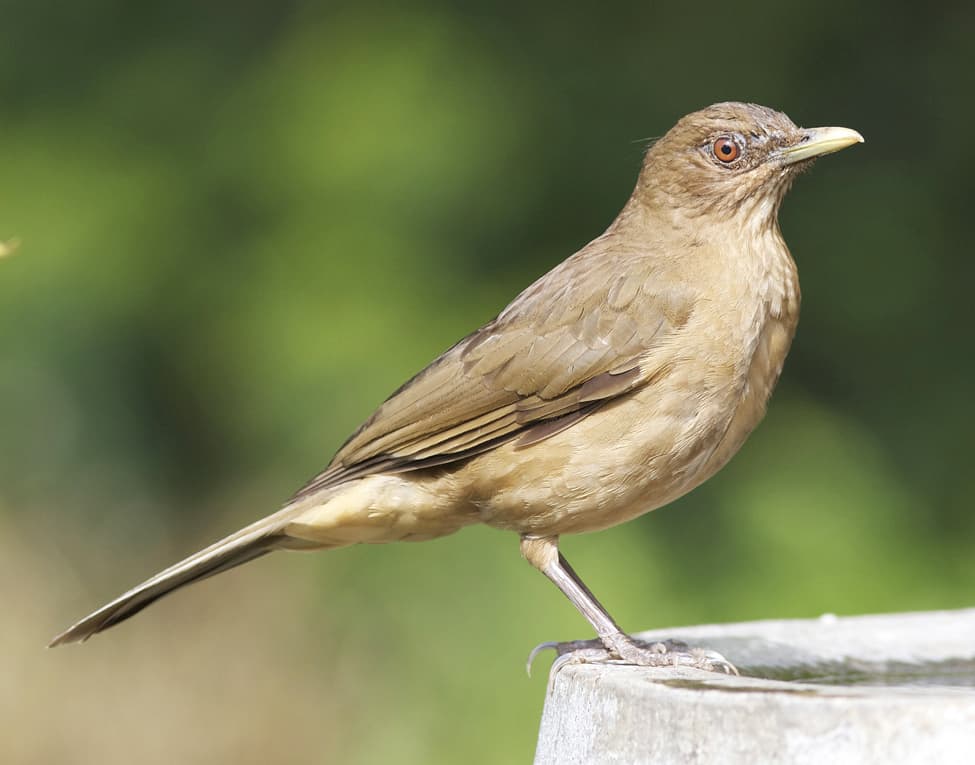The pine warbler is unusual among North American warblers in that its winter range includes much of its breeding range, and almost the entire population remains in the United States throughout the year. A gregarious and cheerful little bird, it is often found in flocks in winter. Males sing their musical trill with abandon on all but the coldest days.
Look For
A small (5 1/2 inches long) bird with a sharp warbler bill, plain olive back, plain yellow breast, and two white wing bars, the pine warbler male in spring is not hard to identify. His duller mate, however, may cause confusion at times. Immatures in fall, lacking any yellow, are very similar to several other fall warblers, and frequently end up being called “UFOs,” or Unidentified Feathered Objects.
Listen For
The pine warbler’s song is a loose trill, similar to the notes of a chipping sparrow, but richer and more musical.
Find It
True to its name, the pine warbler is a bird of open pine woods and pine barrens, especially during the breeding season. In winter the pine warbler expands its territory to include orchards, thickets, mixed woodland edges, and bottomland forests—and even suburban backyards, where it is not hesitant to seek food from a feeder.
Remember
The pine warbler is one of the most willing of all North American warblers to come to backyard feeders, especially in winter. It readily takes suet, peanut butter mixes, crushed nuts, cracked corn, sunflower bits, and cornmeal from a variety of feeder types.
Wow!
Pine warbler nests are placed high in a pine tree, well out on a limb and hidden from sight by pine needles. The female builds an open cup nest of weeds, twigs, and pine needles. The three to five eggs are incubated by both parents for about 10 days.
Both parents also feed the nestlings, which leave the nest at about 10 days of age. There may be two or even three broods per year. To find pine warblers on their nesting grounds, visit appropriate pine woodlands and listen for their pleasant, trilling song.




